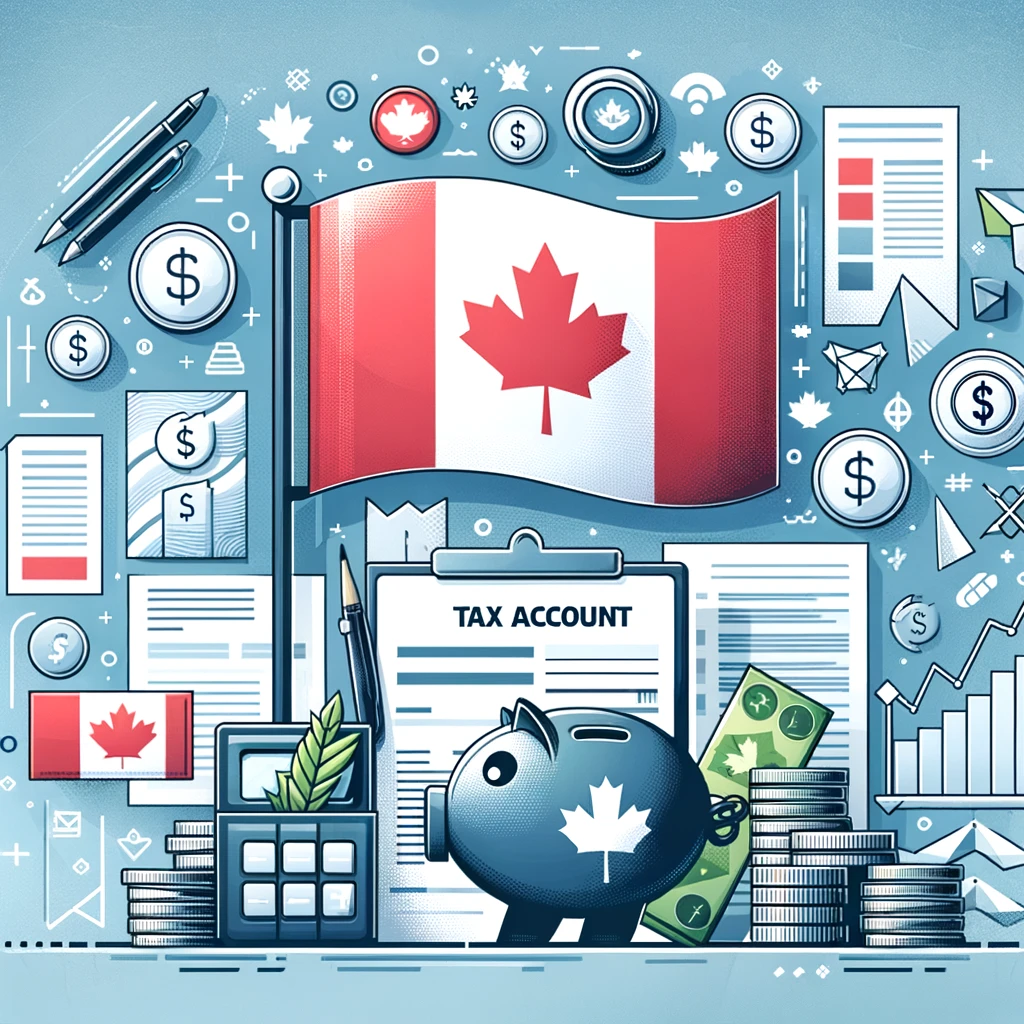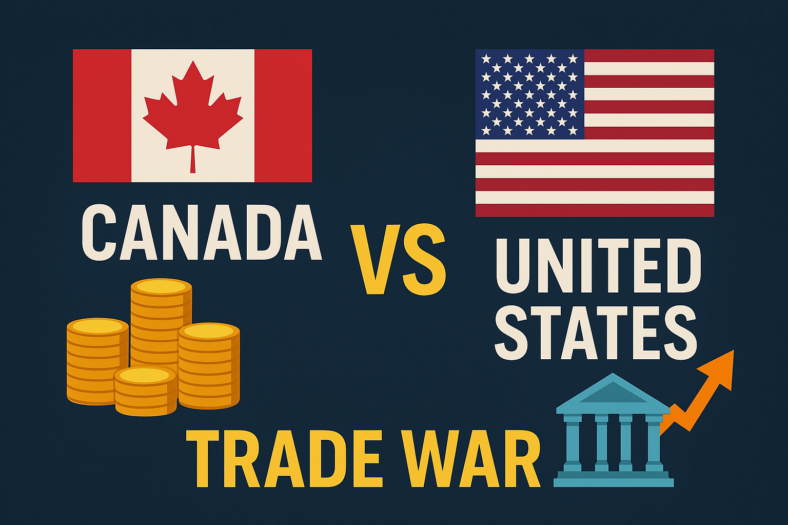Tax-free savings accounts (TFSAs) have become an essential component of financial planning in Canada, offering individuals a flexible and tax-efficient way to grow their savings. With a variety of options available, choosing the best TFSA can be a daunting task. However, understanding the features, benefits, and limitations of each account can help individuals make informed decisions to maximize their savings potential. In this guide, we will explore some of the top tax-free savings accounts in Canada, examining their key features, investment options, fees, and eligibility criteria. Whether you’re a seasoned investor or just starting your savings journey, this guide aims to provide comprehensive insights to help you make the most of your TFSA contributions.
Here are our top picks for the best TFSAs in Canada
Types of tax-free savings accounts
Tax-free savings accounts (TFSAs) in Canada come in various forms, each tailored to meet different financial goals and preferences. Here are some common types:
High-Interest Savings Accounts (HISAs): High-interest savings accounts offered by banks and financial institutions provide a safe and straightforward way to earn interest on your savings while keeping them accessible. These accounts typically offer competitive interest rates and no minimum balance requirements, making them suitable for short-term savings goals or emergency funds.
GIC/Term Deposits: Guaranteed Investment Certificates (GICs) or term deposits within a TFSA offer fixed interest rates over a predetermined period, ranging from a few months to several years. While GICs provide a predictable return on investment and are protected by deposit insurance, they lack liquidity as funds are locked in until maturity.
Mutual Funds: Many banks and investment firms offer mutual funds that can be held within a TFSA. These funds pool money from multiple investors to invest in a diversified portfolio of stocks, bonds, or other securities. Mutual funds offer the potential for higher returns compared to traditional savings accounts but also carry higher risks.
Exchange-Traded Funds (ETFs): ETFs are similar to mutual funds but trade on stock exchanges like individual stocks. They often have lower management fees and provide access to a broader range of investment options, including index-tracking ETFs, sector-specific ETFs, and actively managed ETFs.
Stocks: Some brokerage firms allow investors to hold individual stocks within a TFSA, providing an opportunity for capital appreciation and dividend income. While investing in stocks can yield significant returns, it also involves higher risk and requires careful research and monitoring.
Bonds: Government bonds, corporate bonds, and other fixed-income securities can be held within a TFSA to generate steady interest income. Bonds are generally considered safer than stocks but may offer lower returns.
Robo-Advisors: Robo-advisors offer automated investment management services, creating and managing a diversified portfolio of ETFs based on your risk tolerance and financial goals. They typically charge lower fees compared to traditional investment advisors.
Each type of TFSA has its advantages and considerations, so it’s essential to assess your risk tolerance, investment horizon, and financial objectives before choosing the most suitable account for your needs. Additionally, consult with a financial advisor for personalized guidance tailored to your specific circumstances.
What is a tax-free savings account?
A Tax-Free Savings Account (TFSA) is a savings and investment vehicle available to Canadian residents, introduced by the Canadian government in 2009. Unlike traditional savings accounts, TFSAs offer individuals the opportunity to earn tax-free income and growth on their contributions.
Overall, TFSAs provide Canadians with a versatile and tax-efficient savings and investment vehicle to help them achieve their financial goals, whether it’s saving for a down payment on a home, funding education expenses, building a retirement nest egg, or pursuing other long-term objectives.
Common tax-free savings account fees
Tax-Free Savings Accounts (TFSAs) typically come with a range of fees, although they tend to be lower than those associated with other investment vehicles like Registered Retirement Savings Plans (RRSPs). Here are some common fees you might encounter with a TFSA:
Account Maintenance Fee: Some financial institutions may charge a flat fee for maintaining a TFSA account. This fee is often waived if you maintain a minimum balance or meet other criteria, such as having multiple accounts with the same institution.
Transaction Fees: Depending on the type of investments held within your TFSA, you may incur transaction fees when buying or selling securities. For example, if you’re investing in individual stocks or exchange-traded funds (ETFs) through a brokerage account, you may pay a commission for each trade.
Management Fees: If you invest in mutual funds, exchange-traded funds (ETFs), or other professionally managed investment products within your TFSA, you’ll likely pay management fees. These fees cover the cost of managing the investment portfolio and are typically expressed as a percentage of your assets under management (e.g., 0.5% to 2% annually).
Advisor Fees: If you work with a financial advisor to manage your TFSA investments, you may be subject to advisor fees. These fees can be charged as a percentage of assets under management (AUM), a flat fee, or a combination of both.
Trading Fees: If you actively trade securities within your TFSA, such as buying and selling stocks or options, you may incur trading fees or commissions charged by your brokerage firm.
Transfer Fees: If you decide to transfer your TFSA from one financial institution to another, you may encounter transfer-out fees from your current provider and transfer-in fees from the new institution. Some institutions offer promotions or reimbursements to cover these fees when you transfer your account to them.
Inactivity Fees: Some financial institutions may charge inactivity fees if you don’t make any contributions or transactions in your TFSA over a certain period. These fees are designed to encourage account activity and may vary depending on the institution’s policies.
It’s essential to review the fee schedule and terms and conditions provided by your financial institution or investment provider to understand the specific fees associated with your TFSA. Additionally, consider comparing fees across different providers to ensure you’re getting the best value for your investment.
Common tax-free savings account features
Tax-Free Savings Accounts (TFSAs) in Canada typically share several common features designed to provide flexibility, tax efficiency, and ease of use for account holders. Here are some common features you’ll find across most TFSA offerings:
Tax-Free Growth: One of the primary features of TFSAs is the ability to earn tax-free income and growth on investments held within the account. This includes interest income, dividends, and capital gains, all of which can accumulate within the TFSA without being subject to income tax.
Contribution Room: TFSA contribution room accumulates each year for Canadian residents aged 18 and older. The annual contribution limit is set by the government and can vary from year to year. Unused contribution room can be carried forward indefinitely, allowing individuals to catch up on contributions in future years.
Flexibility in Contributions and Withdrawals: TFSAs offer flexibility in terms of contributions and withdrawals. Account holders can contribute up to their available contribution room each year, and unused contribution room can be carried forward. Withdrawals can be made at any time for any purpose without penalty, and withdrawn amounts can be recontributed in future years without impacting contribution room.
Wide Range of Investment Options: TFSAs can hold various investment products, including high-interest savings accounts, Guaranteed Investment Certificates (GICs), mutual funds, stocks, bonds, exchange-traded funds (ETFs), and other securities. This allows individuals to customize their TFSA holdings based on their risk tolerance, investment goals, and time horizon.
No Impact on Government Benefits: Income earned within a TFSA does not affect eligibility for government benefits or tax credits. This makes TFSAs particularly attractive for supplementing retirement income without triggering clawbacks in Old Age Security (OAS) or Guaranteed Income Supplement (GIS) benefits.
Portability: TFSAs are portable, meaning you can transfer your account from one financial institution to another without losing your accumulated contribution room. This allows individuals to take advantage of better interest rates, investment options, or customer service offered by different providers.
No Minimum Age Requirement for Contributions: Unlike Registered Retirement Savings Plans (RRSPs), which require earned income, TFSAs have no minimum age requirement for contributions. This makes them accessible to individuals of all ages, including minors, who can start building tax-free savings early in life.
These common features make TFSAs a versatile and valuable tool for Canadians looking to save and invest for various financial goals, whether it’s building an emergency fund, saving for a down payment on a home, funding education expenses, or supplementing retirement income.
Why should you choose a tax-free savings account?
Choosing a Tax-Free Savings Account (TFSA) offers several compelling benefits that make it an attractive option for Canadians looking to save and invest. Here are some reasons why you might consider opening a TFSA:
Tax-Free Growth: Perhaps the most significant advantage of a TFSA is the opportunity for tax-free growth on your investments. Any interest, dividends, or capital gains earned within the account are not subject to income tax, allowing your savings to grow faster over time compared to taxable accounts.
Flexibility: TFSAs offer flexibility in terms of contributions and withdrawals. You can contribute up to your available contribution room each year, and unused contribution room can be carried forward indefinitely. Withdrawals can be made at any time for any purpose without penalty, and withdrawn amounts can be recontributed in future years, providing unmatched flexibility for your savings.
No Impact on Government Benefits: Income earned within a TFSA does not affect eligibility for government benefits or tax credits. This means that withdrawals from a TFSA do not count as income for tax purposes and do not impact benefits such as Old Age Security (OAS) or Guaranteed Income Supplement (GIS) payments.
Wide Range of Investment Options: TFSAs can hold various investment products, including high-interest savings accounts, Guaranteed Investment Certificates (GICs), mutual funds, stocks, bonds, exchange-traded funds (ETFs), and other securities. This allows you to build a diversified investment portfolio tailored to your risk tolerance and financial goals within a tax-efficient wrapper.
No Age Restrictions for Contributions: Unlike Registered Retirement Savings Plans (RRSPs), which require earned income and have contribution limits based on age, TFSAs have no minimum age requirement for contributions. This makes them accessible to individuals of all ages, including minors, who can start building tax-free savings early in life.
Useful for Various Financial Goals: TFSAs can be used for a wide range of financial goals, including building an emergency fund, saving for a down payment on a home, funding education expenses, supplementing retirement income, or achieving other long-term objectives. The flexibility and tax efficiency of TFSAs make them suitable for both short-term and long-term savings goals.
Overall, choosing a TFSA can provide significant advantages in terms of tax savings, flexibility, and investment options, making it a valuable tool for Canadians looking to grow their savings and achieve their financial goals.
Benefits of a tax-free savings account
Tax-Free Savings Accounts (TFSAs) offer a range of benefits that make them an attractive option for Canadians looking to save and invest. Here are some key benefits of TFSAs:
Tax-Free Growth: One of the most significant benefits of TFSAs is the opportunity for tax-free growth on investments held within the account. Any interest, dividends, or capital gains earned within the TFSA are not subject to income tax, allowing your savings to compound faster over time compared to taxable accounts.
Flexibility: TFSAs offer unparalleled flexibility in terms of contributions and withdrawals. You can contribute up to your available contribution room each year, and unused contribution room can be carried forward indefinitely. Withdrawals can be made at any time for any purpose without penalty, and withdrawn amounts can be recontributed in future years without impacting contribution room.
No Impact on Government Benefits: Income earned within a TFSA does not affect eligibility for government benefits or tax credits. This means that withdrawals from a TFSA do not count as income for tax purposes and do not impact benefits such as Old Age Security (OAS) or Guaranteed Income Supplement (GIS) payments.
Wide Range of Investment Options: TFSAs can hold various investment products, including high-interest savings accounts, Guaranteed Investment Certificates (GICs), mutual funds, stocks, bonds, exchange-traded funds (ETFs), and other securities. This allows you to build a diversified investment portfolio tailored to your risk tolerance and financial goals within a tax-efficient wrapper.
No Minimum Age Requirement for Contributions: Unlike Registered Retirement Savings Plans (RRSPs), which require earned income and have contribution limits based on age, TFSAs have no minimum age requirement for contributions. This makes them accessible to individuals of all ages, including minors, who can start building tax-free savings early in life.
Portability: TFSAs are portable, meaning you can transfer your account from one financial institution to another without losing your accumulated contribution room. This allows you to take advantage of better interest rates, investment options, or customer service offered by different providers.
Useful for Various Financial Goals: TFSAs can be used for a wide range of financial goals, including building an emergency fund, saving for a down payment on a home, funding education expenses, supplementing retirement income, or achieving other long-term objectives. The flexibility and tax efficiency of TFSAs make them suitable for both short-term and long-term savings goals.
Overall, the combination of tax-free growth, flexibility, and wide-ranging investment options make TFSAs a valuable tool for Canadians seeking to grow their savings and achieve their financial goals.
Downsides of a tax-free savings account
While Tax-Free Savings Accounts (TFSAs) offer numerous benefits, there are also some potential downsides or limitations to consider when using these accounts:
Contribution Limits: TFSAs have annual contribution limits set by the government, and exceeding these limits can result in penalties. Additionally, contribution room is limited to Canadian residents aged 18 and older, meaning individuals who are not eligible cannot contribute to a TFSA.
Investment Restrictions: While TFSAs can hold various investment products, including stocks, bonds, mutual funds, and ETFs, there may be limitations on certain types of investments, such as foreign investments subject to withholding taxes. This can impact the diversification and growth potential of your portfolio.
Tax-Neutral Investments: Contributions to a TFSA are made with after-tax dollars, meaning there is no immediate tax deduction for contributions, unlike Registered Retirement Savings Plans (RRSPs). While investment growth within the TFSA is tax-free, you do not receive a tax refund for contributions as you would with an RRSP.
Unused Contribution Room: Unused TFSA contribution room can accumulate over time, but it may not always be fully utilized. If you’re not maximizing your TFSA contributions each year, you may be missing out on potential tax-free growth opportunities.
Withdrawal Restrictions: While TFSAs offer flexibility in terms of withdrawals, frequent or large withdrawals can impact your long-term savings goals. Withdrawn amounts can be recontributed in future years, but this process may take time, especially if you’ve already contributed the maximum amount for the year.
Investment Risk: Like any investment, the value of investments held within a TFSA can fluctuate, and there is always a risk of loss. While TFSAs offer tax-free growth, they do not protect against investment losses, so it’s essential to consider your risk tolerance and investment objectives when choosing investments for your TFSA.
Administration Fees: Some financial institutions may charge account maintenance fees, transaction fees, or other administrative fees for managing a TFSA. These fees can eat into your investment returns over time, so it’s essential to review and compare fee structures when choosing a TFSA provider.
Despite these potential downsides, TFSAs remain a valuable tool for tax-efficient savings and investment growth, particularly for Canadians looking to achieve various financial goals while minimizing tax implications. It’s essential to weigh the pros and cons carefully and consider your individual circumstances when deciding whether a TFSA is right for you.
How to choose a tax-free savings account
Choosing the right Tax-Free Savings Account (TFSA) requires careful consideration of your financial goals, investment preferences, and personal circumstances. Here are some steps to help you select the best TFSA for your needs:
Determine Your Goals: Start by identifying your financial goals and objectives for the TFSA. Are you saving for a short-term goal like an emergency fund or a long-term goal like retirement? Clarifying your goals will help you narrow down the features and investment options you need in a TFSA.
Understand Your Risk Tolerance: Consider your risk tolerance when choosing investments for your TFSA. If you’re risk-averse, you may prefer safer options like high-interest savings accounts or Guaranteed Investment Certificates (GICs). If you’re comfortable with risk and seeking higher returns, you may opt for stocks, mutual funds, or ETFs.
Review Investment Options: Evaluate the investment options offered by different TFSA providers, including high-interest savings accounts, GICs, mutual funds, ETFs, stocks, bonds, and other securities. Choose a TFSA provider that offers a diverse range of investment options to align with your investment strategy.
Compare Fees: Review the fee structure of each TFSA provider, including account maintenance fees, transaction fees, management fees (if investing in mutual funds or ETFs), and any other charges. Look for providers with competitive fees and fee waivers for maintaining a minimum balance or meeting certain criteria.
Consider Accessibility and Convenience: Assess the accessibility and convenience of the TFSA provider’s platform. Consider factors such as online banking capabilities, mobile app features, customer service quality, and branch availability if you prefer in-person banking services.
Examine Interest Rates and Returns: If you’re considering a high-interest savings account or GIC within your TFSA, compare interest rates and terms offered by different financial institutions. For investment products like mutual funds or ETFs, research historical performance, fund expenses, and potential returns.
Check Contribution and Withdrawal Policies: Understand the contribution and withdrawal policies of each TFSA provider, including contribution limits, rules for recontributing withdrawn amounts, and any penalties for exceeding contribution limits or making ineligible withdrawals.
Consider Tax Implications: While all TFSAs offer tax-free growth on investments, consider any potential tax implications related to specific investments, such as foreign withholding taxes on dividends or capital gains. Consult with a tax advisor if you’re unsure about the tax implications of certain investments.
Review Account Features and Benefits: Look for additional features and benefits offered by TFSA providers, such as automatic contributions, dividend reinvestment plans (DRIPs), portfolio rebalancing services, educational resources, and promotional offers.
Seek Professional Advice if Needed: If you’re uncertain about which TFSA provider or investment options are best for you, consider seeking advice from a qualified financial advisor who can provide personalized recommendations based on your financial situation and goals.
By following these steps and conducting thorough research, you can choose a TFSA that aligns with your financial objectives and helps you maximize your tax-free savings and investment growth potential.
How to open a tax-free savings account
Opening a Tax-Free Savings Account (TFSA) is a straightforward process that can typically be completed online, by phone, or in person at a financial institution. Here’s a general guide on how to open a TFSA:
Choose a TFSA Provider: Research and compare TFSA providers, including banks, credit unions, investment firms, and online brokerage platforms. Consider factors such as fees, investment options, interest rates (for savings accounts and GICs), account features, and customer service.
Gather Required Documentation: Before opening a TFSA, gather the necessary documentation, which may include government-issued identification (e.g., driver’s license, passport), Social Insurance Number (SIN), proof of address (e.g., utility bill), and any other documents required by the TFSA provider.
Select the Type of TFSA: Decide on the type of TFSA you want to open based on your investment preferences and financial goals. Options may include high-interest savings accounts, Guaranteed Investment Certificates (GICs), mutual funds, ETFs, stocks, bonds, and other securities.
Choose Funding Method: Determine how you’ll fund your TFSA account. You can make an initial deposit using cash, cheque, electronic funds transfer (EFT), or by transferring funds from another account, such as a chequing or savings account held with the same financial institution.
Complete Application Form: Fill out the TFSA application form provided by the TFSA provider. You may need to provide personal information, contact details, employment information, financial details, investment preferences, and beneficiary information.
Review and Sign Documents: Review the TFSA agreement, terms and conditions, and any other relevant documents provided by the TFSA provider. Ensure you understand the account features, fees, investment options, contribution limits, withdrawal rules, and other terms before signing.
Submit Application: Submit your completed application form and any required documentation to the TFSA provider through the chosen method (online, by mail, or in person). If applying online, you may need to upload scanned copies of your documents.
Verify Identity: Depending on the TFSA provider’s policies and regulatory requirements, you may need to verify your identity and sign additional documents in person or through electronic verification methods.
Receive Account Details: Once your TFSA application is approved and processed, you’ll receive confirmation of your account opening along with your account details, including your TFSA account number, login credentials (if applicable), and any other relevant information.
Start Managing Your TFSA: Once your TFSA is open, you can start managing your account, making contributions, selecting investments, and monitoring your savings and investment growth. Keep track of your contributions to ensure you stay within your annual contribution limits.
By following these steps, you can successfully open a TFSA and begin maximizing the tax-free growth potential of your savings and investments. If you have any questions or need assistance, don’t hesitate to reach out to the TFSA provider’s customer service team for guidance.
How does a tax-free savings account work?
A Tax-Free Savings Account (TFSA) is a versatile savings and investment vehicle available to Canadian residents that allows them to earn tax-free income and growth on their contributions. Here’s how a TFSA works:
Contribution Room: Each year, Canadian residents aged 18 and older accumulate contribution room in their TFSA. The annual contribution limit is set by the government and can vary from year to year. Unused contribution room can be carried forward indefinitely, allowing individuals to catch up on contributions in future years.
Tax-Free Growth: Contributions to a TFSA are made with after-tax dollars, meaning there is no immediate tax deduction for contributions. However, any interest, dividends, or capital gains earned within the TFSA are not subject to income tax, allowing your savings to grow tax-free.
Flexible Contributions and Withdrawals: TFSAs offer flexibility in terms of contributions and withdrawals. You can contribute up to your available contribution room each year, and unused contribution room can be carried forward indefinitely. Withdrawals can be made at any time for any purpose without penalty, and withdrawn amounts can be recontributed in future years without impacting contribution room.
Wide Range of Investment Options: TFSAs can hold various investment products, including high-interest savings accounts, Guaranteed Investment Certificates (GICs), mutual funds, stocks, bonds, exchange-traded funds (ETFs), and other securities. This allows you to build a diversified investment portfolio tailored to your risk tolerance and financial goals within a tax-efficient wrapper.
No Impact on Government Benefits: Income earned within a TFSA does not affect eligibility for government benefits or tax credits. This means that withdrawals from a TFSA do not count as income for tax purposes and do not impact benefits such as Old Age Security (OAS) or Guaranteed Income Supplement (GIS) payments.
Portability: TFSAs are portable, meaning you can transfer your account from one financial institution to another without losing your accumulated contribution room. This allows you to take advantage of better interest rates, investment options, or customer service offered by different providers.
No Minimum Age Requirement for Contributions: Unlike Registered Retirement Savings Plans (RRSPs), which require earned income and have contribution limits based on age, TFSAs have no minimum age requirement for contributions. This makes them accessible to individuals of all ages, including minors, who can start building tax-free savings early in life.
Overall, TFSAs provide Canadians with a tax-efficient way to save and invest for various financial goals, whether it’s building an emergency fund, saving for a down payment on a home, funding education expenses, supplementing retirement income, or achieving other long-term objectives. By taking advantage of the tax-free growth and flexibility of TFSAs, individuals can maximize their savings potential and achieve their financial aspirations.
When’s the best time to make a TFSA withdrawal?
The best time to make a Tax-Free Savings Account (TFSA) withdrawal depends on your financial situation, goals, and personal circumstances. Here are some considerations to help you determine the optimal timing for a TFSA withdrawal:
Financial Need: Consider why you need to make a withdrawal from your TFSA. If you have an urgent financial need, such as covering unexpected expenses, medical bills, or emergency repairs, it may be necessary to make a withdrawal regardless of timing.
Tax Implications: Withdrawals from a TFSA are tax-free and do not affect your taxable income or eligibility for government benefits. Unlike Registered Retirement Savings Plans (RRSPs), which are subject to withholding tax upon withdrawal, TFSA withdrawals are not taxed, making them ideal for supplementing income in retirement or during periods of financial need.
Impact on Investment Goals: Consider the impact of a TFSA withdrawal on your long-term investment goals and savings objectives. If you’re withdrawing funds earmarked for a specific goal, such as buying a home, funding education expenses, or supplementing retirement income, ensure that the withdrawal aligns with your overall financial plan.
Market Conditions: Evaluate current market conditions and the performance of your TFSA investments before making a withdrawal. If your investments have experienced significant growth and you believe they may be overvalued or due for a correction, it may be an opportune time to lock in gains by making a withdrawal.
Reinvestment Opportunities: Assess whether there are better investment opportunities available elsewhere for the withdrawn funds. If you believe you can achieve higher returns by reallocating the funds to a different investment vehicle or taking advantage of a new investment opportunity, it may be advantageous to make a withdrawal.
Contribution Room: Consider your TFSA contribution room and the potential impact of a withdrawal on your available contribution space. Withdrawn amounts can be recontributed in future years without impacting contribution room, but there may be a delay before you can recontribute the funds if you’ve already maximized your contribution room for the current year.
Ultimately, the best time to make a TFSA withdrawal depends on your individual circumstances and financial objectives. It’s essential to weigh the factors mentioned above and consult with a financial advisor if you’re unsure about the timing or implications of a TFSA withdrawal.
How does a tax-free savings account differ from other types of accounts?
Tax-Free Savings Accounts (TFSAs) differ from other types of accounts in several key ways, including their tax treatment, contribution limits, withdrawal rules, and investment options. Here’s a comparison of TFSAs with some other common types of accounts:
Registered Retirement Savings Plans (RRSPs):
- Tax Treatment: Contributions to RRSPs are made with pre-tax dollars, meaning you receive a tax deduction for contributions, but withdrawals are taxable as income.
- Contribution Limits: RRSP contribution limits are based on earned income and age, with annual limits determined by the government.
- Withdrawal Rules: Withdrawals from RRSPs are taxed as income and may be subject to withholding tax, with the exception of Home Buyers’ Plan (HBP) and Lifelong Learning Plan (LLP) withdrawals, which have specific repayment requirements.
- Investment Options: RRSPs can hold various investment products, including stocks, bonds, mutual funds, ETFs, GICs, and savings accounts.
Non-Registered Investment Accounts:
- Tax Treatment: Non-registered accounts offer no tax advantages, meaning investment income, including interest, dividends, and capital gains, is subject to income tax in the year earned.
- Contribution Limits: Non-registered accounts have no contribution limits, allowing unlimited contributions.
- Withdrawal Rules: Withdrawals from non-registered accounts do not have specific rules or restrictions, but investment gains may be subject to capital gains tax upon withdrawal.
- Investment Options: Non-registered accounts can hold a wide range of investment products similar to TFSAs and RRSPs.
High-Interest Savings Accounts:
- Tax Treatment: Interest earned in high-interest savings accounts is taxable as income in non-registered accounts but is tax-free in TFSAs.
- Contribution Limits: High-interest savings accounts may have no contribution limits, but TFSA contributions are subject to annual limits set by the government.
- Withdrawal Rules: Withdrawals from high-interest savings accounts are typically unrestricted, but TFSA withdrawals are tax-free and do not affect contribution room.
- Investment Options: TFSAs offer a broader range of investment options beyond high-interest savings accounts, including stocks, bonds, mutual funds, ETFs, and other securities.
Overall, TFSAs offer unique advantages, including tax-free growth on investments, flexibility in contributions and withdrawals, and a wide range of investment options, making them a valuable tool for Canadians seeking to grow their savings and investments in a tax-efficient manner.
Who’s eligible for a tax-free savings accounts
To be eligible for a Tax-Free Savings Account (TFSA) in Canada, you must meet the following criteria:
Age: You must be a Canadian resident aged 18 or older to open a TFSA. However, there is no maximum age limit for contributing to a TFSA, meaning individuals of any age can continue to contribute as long as they meet the other eligibility criteria.
Residency: You must be a resident of Canada for tax purposes to open and contribute to a TFSA. Non-residents are not eligible to open TFSAs, and contributions made while non-resident status may be subject to penalties.
Social Insurance Number (SIN): You must have a valid Social Insurance Number (SIN) to open a TFSA. Your SIN will be used to track your TFSA contributions and monitor your contribution room.
Contribution Room: Your TFSA contribution room is based on your annual contribution limit set by the government, starting from the year you turn 18 (or the year TFSAs were introduced, if you were 18 or older at that time). Unused contribution room accumulates and can be carried forward indefinitely, allowing you to catch up on contributions in future years.
Unused Contribution Room: You must have available TFSA contribution room to make contributions. If you’ve already contributed the maximum amount allowed for the current year, you’ll need to wait until the next calendar year or until you have additional contribution room available.
Types of Investments: TFSAs can hold various investment products, including high-interest savings accounts, Guaranteed Investment Certificates (GICs), mutual funds, stocks, bonds, exchange-traded funds (ETFs), and other securities. However, certain investments may have restrictions or limitations depending on the TFSA provider and account type.
Withdrawal Rules: While TFSAs offer flexibility in terms of withdrawals, you must adhere to the TFSA withdrawal rules, including contribution room considerations, tax implications, and potential penalties for overcontributions or ineligible withdrawals.
If you meet these eligibility criteria, you can open a TFSA and start taking advantage of its tax-free growth and flexible savings and investment features to help you achieve your financial goals. If you’re unsure about your eligibility or have questions about opening a TFSA, consult with a financial advisor or contact the TFSA provider for guidance.
Alternatives to tax-free savings accounts
Several alternatives to Tax-Free Savings Accounts (TFSAs) are available, each with its own features, benefits, and considerations. Here are some common alternatives to TFSAs:
Registered Retirement Savings Plans (RRSPs):
- RRSPs offer tax-deferred growth, meaning contributions are tax-deductible, and investment earnings are tax-sheltered until withdrawal.
- Contributions to RRSPs reduce taxable income, providing immediate tax savings, but withdrawals are taxed as income in retirement.
- RRSPs are designed primarily for retirement savings and have contribution limits based on earned income and age.
Non-Registered Investment Accounts:
- Non-registered investment accounts offer no tax advantages, but they have no contribution limits and can hold a wide range of investment products.
- Investment income, including interest, dividends, and capital gains, is taxable in the year earned in non-registered accounts.
- Non-registered accounts provide flexibility in terms of contributions, withdrawals, and investment options but lack the tax-free growth offered by TFSAs.
High-Interest Savings Accounts:
- High-interest savings accounts offer competitive interest rates and liquidity, making them suitable for short-term savings goals and emergency funds.
- Interest earned in high-interest savings accounts is taxable as income in non-registered accounts but is tax-free in TFSAs.
- High-interest savings accounts provide security and accessibility but may offer lower returns compared to other investment options.
Registered Education Savings Plans (RESPs):
- RESPs are designed to help parents and guardians save for their children’s post-secondary education.
- Contributions to RESPs are not tax-deductible, but investment growth is tax-sheltered until withdrawn for educational purposes.
- RESP contributions may be eligible for government grants, such as the Canada Education Savings Grant (CESG), which can enhance savings growth.
Registered Disability Savings Plans (RDSPs):
- RDSPs are intended to help individuals with disabilities and their families save for long-term financial security.
- Contributions to RDSPs are not tax-deductible, but investment growth is tax-sheltered until withdrawn for disability-related expenses.
- RDSP contributions may be eligible for government grants and bonds, such as the Canada Disability Savings Grant (CDSG) and Canada Disability Savings Bond (CDSB).
Employer-Sponsored Retirement Plans:
- Employer-sponsored retirement plans, such as defined contribution pension plans and group RRSPs, are offered by some employers as part of their employee benefits package.
- These plans often include employer contributions, tax-deferred growth, and investment options selected by the employer or plan administrator.
When considering alternatives to TFSAs, it’s essential to evaluate your financial goals, risk tolerance, investment preferences, and tax implications to choose the most suitable option for your needs. Consulting with a financial advisor can help you make informed decisions and build a comprehensive savings and investment strategy.
FAQs about tax-free savings accounts in Canada
A TFSA is a registered savings and investment account available to Canadian residents, allowing tax-free growth on contributions. Any interest, dividends, or capital gains earned within the TFSA are not subject to income tax, and withdrawals can be made tax-free at any time.
Canadian residents aged 18 or older with a valid Social Insurance Number (SIN) are eligible to open a TFSA. There is no maximum age limit for contributing to a TFSA, and contribution room accumulates each year.
The annual TFSA contribution limit is set by the government and can vary from year to year. As of 2022, the annual contribution limit is $6,000. Unused contribution room can be carried forward indefinitely.
TFSAs can hold various investment products, including high-interest savings accounts, Guaranteed Investment Certificates (GICs), mutual funds, stocks, bonds, exchange-traded funds (ETFs), and other securities.
No, TFSA contributions are made with after-tax dollars and are not tax-deductible. However, any investment income earned within the TFSA is tax-free, including interest, dividends, and capital gains.
Overcontributions to a TFSA are subject to a penalty tax of 1% per month on the excess amount. It’s essential to monitor your contribution room and avoid exceeding the annual limits to avoid penalties.
Yes, TFSA withdrawals can be made at any time for any purpose without penalty. Withdrawn amounts are tax-free and do not affect your contribution room. However, it’s important to consider the impact of withdrawals on your long-term savings goals.
If you become a non-resident of Canada for tax purposes, you can still keep your TFSA open and continue to earn tax-free investment income. However, you cannot contribute additional funds to your TFSA while non-resident.
Yes, you can have multiple TFSAs with different financial institutions, but your total contributions across all accounts cannot exceed your available contribution room for the year.
No, TFSA withdrawals do not count as income for tax purposes and do not affect eligibility for government benefits or tax credits, including Old Age Security (OAS), Guaranteed Income Supplement (GIS), and Canada Child Benefit (CCB).
In conclusion, Tax-Free Savings Accounts (TFSAs) in Canada offer a powerful tool for individuals looking to grow their savings and investments in a tax-efficient manner. This comprehensive guide has provided insights into the benefits, features, eligibility criteria, investment options, and frequently asked questions about TFSAs. By understanding how TFSAs work and how they compare to other types of accounts, Canadians can make informed decisions to maximize their tax-free savings potential and achieve their financial goals. Whether you’re saving for short-term needs, long-term objectives, or retirement, TFSAs offer flexibility, tax-free growth, and a wide range of investment options to help you build wealth and secure your financial future.




















